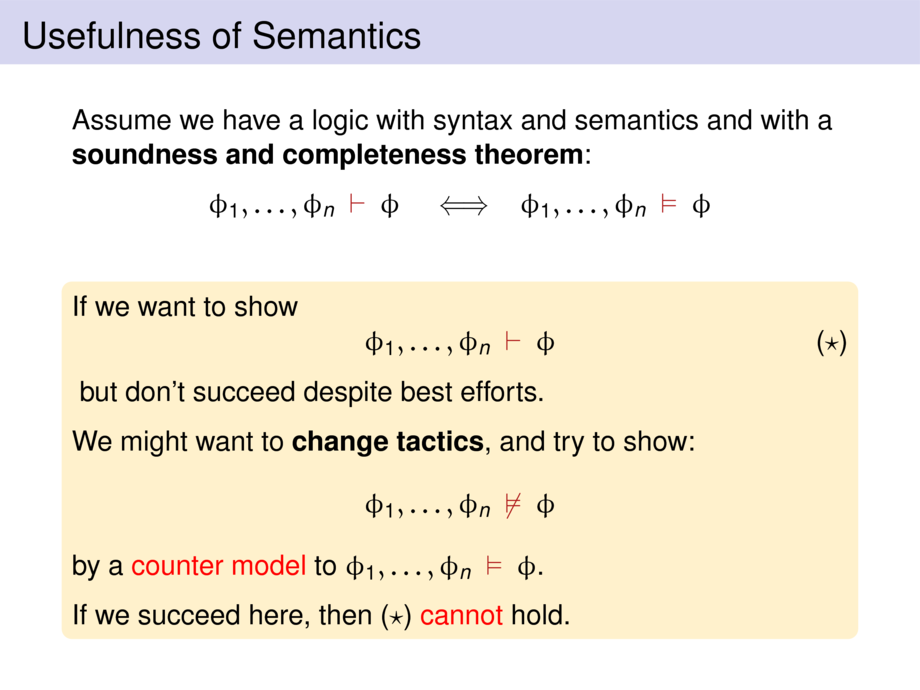



































































































25/270
\begin{frame}{Usefulness of Semantics}
Assume we have a logic with syntax and semantics
and with a \emph{soundness and completeness theorem}:
\begin{talign}
\aformi{1}, \ldots, \aformi{n} \derives \aform
\;\;\;\;\Longleftrightarrow\;\;\;
\aformi{1}, \ldots, \aformi{n} \satisfies \aform
\end{talign}
\pause
\begin{goal}{}
If we want to show
\begin{equation}\label{eq:derives}
\aformi{1}, \ldots, \aformi{n} \derives \aform
\tag{\mbox{$\star$}}
\end{equation}\pause{}
but don't succeed despite best efforts.
\pause\medskip
We might want to \emph{change tactics}, and try to show:
\begin{equation*}
\aformi{1}, \ldots, \aformi{n} \satisfiesnot \aform
\end{equation*}
by a \alert{counter model} to $\aformi{1}, \ldots, \aformi{n} \satisfies \aform$.
\pause\medskip
If we succeed here, then \eqref{eq:derives} \alert{cannot} hold.
\end{goal}
\end{frame}

